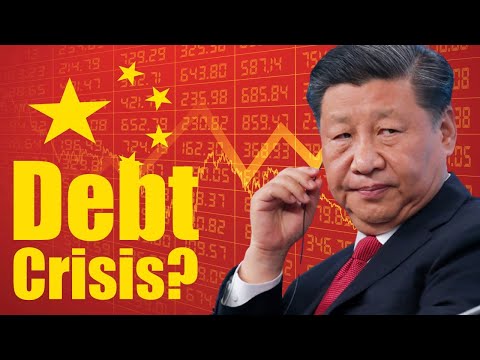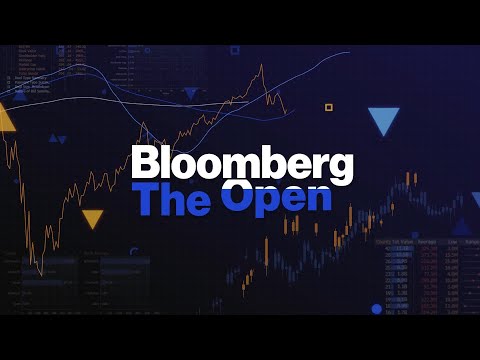China's International Debt Crisis

In 2013 President Xi Jinping announced the launch of his signature policy, The Belt and Road Initiative, which is the largest transnational infrastructure program ever undertaken by a single country. It aims to build out global infrastructure and boost China’s influence around the world. Most of the countries that officially signed up are developing nations, many with the weakest credit ratings in the world. Since 2013, China’s cumulative engagement on the project comes to 932 billion dollars, which is made up of 561 billion dollars in construction contracts and 371 billion dollars in investments.
China has built important infrastructure like power stations, airports, railways and hospitals all around the world, but also more frivolous items like sports stadiums and expensive skyscrapers which may not be as helpful in terms of development in poor nations. The overall initiative is hugely ambitious, affecting around 65 percent of the world’s population, covering one-third of the world’s GDP, and about a quarter of all the goods and services that get moved around the world. Today though, many of the loans financing these huge infrastructure projects are going bad, and they are going bad in record numbers. The total value of loans from Chinese institutions that had to be renegotiated in 2020 and 2021 rose to 52 billion dollars, which is more than three times the $16bn of the prior two years.
Now, of course, a lot of this is to be expected - in particular due to the sudden slow down that occurred due to the global pandemic. But the worsening situation in Emerging markets right now means that China is not only dealing with its own internal credit problems, but also with its first international debt crisis. The project name – Belt and Road initiative - is possibly a little bit confusing as the “belt” part of the project is a road – or at least land based, and then the road part of the project is a sea route. But there you go… The overall idea is to build international trade infrastructure both for the benefit of China and its trade partners, and it can be thought of as a Chinese version of Americas Marshall Plan, but for the 21st century. The Marshall Plan was an American program to provide aid for the reconstruction of western European cities, industries and infrastructure which were mostly destroyed during the second world war. It aimed to remove trade barriers between European nations and to foster commerce between those countries and the United States.
It was as much a political project as an economic one, as one of its stated goals was to halt the spread communism in Europe, and it aimed to contain the Soviet Union and its eastern allies. At the end of the second world war, The United States was a manufacturing powerhouse with world leading industrial capacity, which had only grown during the war. The saturation of the domestic market once the war was over and the nations inability to export its excess capacity meant that economic growth was starting to wane. The terms of the Marshall Plan stated that European countries receiving aid would have to accept American investment and import American goods. Financing Europe’s recovery was not purely altruistic, it was beneficial to the United States, as it provided a huge export market for the country. China found themselves in a very similar situation towards the end of the Global Financial Crisis where the global recession meant that export-led growth was no longer feasible.
The Belt and Road initiative was a way of sending Chinese goods and Chinese workers all over the world to build out trade infrastructure that connected China both to the mature markets of Europe and to the natural resource rich underdeveloped countries in Asia, Africa and later south America. We should note that the Marshall Plan, which was core to the regeneration of Europe after the Second World War (so, a pretty large project), was one-twelfth the size of what China plans with the Belt and Road initiative. That should give you an idea of the huge scale of this project. Now, other goals underlying the Belt and Road Initiative were to restructure the Chinese economy to hopefully avoid what is known as “the middle-income trap”, which is a theory of economic development where fast-growing countries tend to lose their competitive edge in the export of manufactured goods over time due to rising wages. This happens before they’re able shift their economy into to producing higher-value goods and services, and it’s the point at which many growing economies falter. The belt and road initiative can be seen as partially being used to extend the length of time China can export manufactured goods giving them more time to develop into more of a modern consumption-based economy.
There are of course plenty of international criticisms of the Belt and Road initiative, some (quite naturally) coming from competing countries but also some coming from the countries that have received development loans from China. Many of the development projects around the world have been mired in corruption, and of course this is almost impossible to avoid in emerging markets. Other criticisms have been that the projects are expensive and are built by a Chinese workforce that is shipped in specifically for the project.
Often the developers even ship in food to feed the Chinese workers. This lack of interaction with the local economy means that there is no boost in employment in the country in question and there is no transfer of skills to the local workforce. Critics additionally argue that Belt and Road loans are sometimes extended at high interest rates for projects that fail to generate any returns for the economies that are left footing the bill. There are accusations of modern slavery associated with the initiative where many of the Chinese workers who are shipped abroad to work on these projects face inhumane treatment, poor living and working conditions, have their passports confiscated once they arrive in a country and sometimes have their pay withheld. Some point at these projects as examples of neocolonialism using a tactic of “debt-trap diplomacy” where debt is strategically extended to poor countries who can then be held captive to Beijing’s wishes and demands.
There are sometimes unusual clauses in the loan documents requiring the borrowers to speak well of the Chinese political leadership for example. Critics point to white elephant projects in places like Sri Lanka and Malaysia arguing that these massive projects provided no real value, and the accompanying debt is a burden to countries that were already in fiscally weak positions. Others dispute all of these arguments, pointing out that many developing countries like Sri Lanka were already in debt to western countries long before China turned up to build these infrastructure projects and that only 10 per cent of Sri Lanka’s external debt is actually owed to China. Many developing countries they argue have huge infrastructure deficits and are in need of things like power plants, water supply and transportation infrastructure which no one else was willing to help them build.
Now, China has also been accused of strategically using overseas financing to gain assets from developing countries. We should note that so far, in default situations, very little asset seizure has occurred, and China has in the past written off non-performing loans to countries like Cuba, Zimbabwe and Ethiopia. On the other hand, Tajikistan reportedly signed over land and mineral rights to China in order to settle some of their debt a few years back, and a Chinese company has taken over the operation of a port in Sri Lanka on a 99-year lease after the country defaulted on payments. The debt issue is something that bothers many Chinese policymakers within the country too. Domestic critics occasionally voice concern that some of these huge projects could end up entangling China in other nations’ internal issues for years to come or leave Chinese state companies on the wrong side of national defaults. This is of course a growing risk right now.
Sri Lanka is one of the developing countries that had hoped to benefit from the surge in Chinese overseas lending, but today a large number of failed projects - such as “the Lotus tower”, one of the tallest buildings in South Asia stand as monuments to the malinvestment that occurred. The huge amount of borrowing and investment in Sri Lanka didn’t yield any economic return to the country. Sri Lanka, defaulted on its sovereign debt in May of this year, the first Asia-Pacific country to do so in over twenty years, and similar cases are likely to continue to crop up.
A recent study on the financial health of the Belt and Road Initiative by the Financial Times uncovered a mountain of non-performing loans all around the world. The FT points out that in the cases where debt burdens prove to be unsustainable, China finds itself in the position of issuing new loans or facing the broader distress that follows a default. When China began financing these infrastructure projects a decade ago, it found itself in competition with international development lenders like the World Bank for example. Now, that it has to extend credit to prevent defaults, it is starting to mirror the role of the IMF - which provides emergency loans to get countries through economic crises. It is not clear that this is a role that China wants, but they have found themselves in this situation as so many of their loans are going bad in the current economic climate.
Belt and Road lending helped to make China the world’s biggest bilateral lender. To the 74 countries classified as low-income by the World Bank, China is bigger than all other bilateral lenders combined. Between 2000 and 2014, Chinese investment in Africa went from 2 per cent of American levels to 55 per cent and their lending has only grown since. Now it’s important to note that infrastructure spending can only really be justified when it allows for an increase in worker productivity that is greater than the cost of the infrastructure being built. The return on these projects in terms of economic growth have to be greater than the cost of the project in question – otherwise they just don’t make sense. Whenever this is not the case, the spending ends up holding back economic growth.
An easy way to think of this is to compare it to the idea that a worker can quite reasonably borrow money to buy the tools they need to do their job, which will then make them money, but if they borrow money and buy a whole bunch of tools that they don’t need and which don’t boost their income, then, it is malinvestment. Now, I have covered this idea in a few of my earlier videos that a lot of Chinese infrastructure spending over the last twenty years both domestically and internationally has been malinvestment and that a lot of this has been done just to hit government GDP growth targets – for political purposes. Chinese debt has been growing very rapidly since the 1990’s and up until the mid 2000’s this debt mostly funded necessary and productive investment. There was a huge infrastructure deficit in China thirty years ago, and almost all infrastructure investment at the time paid off.
But, in the mid 2000’s Chinese debt began rising faster than the country’s GDP, meaning that the cost of the additional debt was greater than the return achieved on new investments. This is a sign of malinvestment. Bad loans have been an increasing problem in China, particularly over the last year or two. There is the ongoing issue of huge real estate developers like Evergrande being unable to pay their debts.
We’ve seen bank runs in Henan province which led to violent protests, and we are seeing increasing numbers of Chinese homeowners join a nationwide boycott of mortgage payments on unfinished houses. These issues are raising concern of default risk at Chinese banks. The youth unemployment numbers in China showed that in June almost one in five people in the 16-24 age group were out of work. This is a big problem for the country, as this group are the best educated and most able workers. They should be the most productive workers in the country. So, China has this combination of domestic debt problems and an overseas debt crisis to deal with.
Now, Zambia sourced over a third of their external debt from China and was presented as a star of the belt and road initiative on the African continent. The Chinese embassy was boasting of the virtues of the scheme in their public statements in 2019, just months before the country defaulted on its external debt. Pakistan is the biggest single recipient of Belt and Road financing worldwide with a total of 62 billion dollars in Chinese finance pledges.
Their foreign exchange reserves are on a knife edge right now, and just like in Sri Lanka, there are questions in Pakistan over the viability of many of the infrastructure projects that have been built. On Friday it was announced that a consortium of Chinese state banks had to lend $2.3bn to Pakistan to help the country stave off a foreign payments crisis. Russia is another key beneficiary of Chinese development spending, but since the invasion of Ukraine new investments in Russia have fallen to zero. This is the first six-month period with no China to Russia Belt and road initiative deals. How big are Chinese loans in that region? Well, since 2000, cumulative Chinese lending to Russia has been over 125 billion dollars and mostly financed Russian state-owned enterprises in the energy sector.
Total Chinese lending commitments to Ukraine are estimated to be around $7 billion and these loans largely supported projects in agriculture and infrastructure. Chinese banks have made around 8 billion dollars in loans to Belarus since 2000. So when it’s combined, the three countries make up almost a fifth of China’s overseas lending in the last twenty years.
Their credit ratings are not improving… So, from a Chinese perspective, the Russian invasion of Ukraine means an increase in the risk of its overseas loan portfolio as the geopolitical situation has pushed many of its debtor countries closer to default. Almost 60% of low-income countries around the world are now in debt distress or at high risk. As a result, China’s state banks have found themselves exposed to a large amount of potentially ‘distressed’ debt.
Now, as bad as that looks, a significant portion of China’s lending is collateralized, in particular the loans to commodity exporting nations. This means that these loans may be better than they at first appear as they could be serviced through the proceeds of commodity exports. Russia is a great example of this: a large amount of Chinese lending to Russia was in the form of prepayments for oil deliveries through the Russia China oil pipeline. It is very likely that even if things got a lot worse for Russia, they would continue to service the loans in this manner, even if they defaulted on other creditors. The broader global implications of Chinas internal and external debt problems that we have to think about are that cross-border financial contagion can be brought about due to a ‘common creditor’. If there is one very large creditor like China whose overall loan portfolio has become impaired, they become increasingly likely to cut risk by lending less to other risky borrowers.
This means that there is very little new lending occurring and that there is a reduced appetite for rolling over existing loans as they become due. This sets the stage for a sudden stop which can have a global impact. It would appear that China’s overseas lending boom has mostly already ended as the country has been forced to focus on its internal financial problems. In a number of Asian, African and Latin American countries, the Belt and Road Initiative is at risk of metastasizing into a series of debt crises.
The Russian invasion of Ukraine has only added to the difficulties that China faces right now. As major central banks around the world attempt to rein in inflation by tightening financial conditions, a sudden disappearance of credit can be expected to hit the developing world particularly hard. Net transfers from Chinese lenders to developing country recipients turned negative in 2019 after reaching a peak in 2016. What this means is that principal and interest repayments to China now exceed the amounts that are being extended as fresh loans.
Chinese policy banks have flipped from being a source of capital for emerging market growth into their new role of ‘global debt collector’. We will have to see how that goes… A sudden disappearance of credit could cause significant ripple effects in the Global South. Many of these countries are impacted by the rising cost of food and energy. The Chinese loans tend to have shorter than typical maturities, meaning that they need to be rolled over more frequently. For many poor and highly indebted countries this means a growing dependence on China at a time that China may be unwilling to lend.
Very few analysts expect Chinese Belt and Road initiative spending to return to its prior levels and many suggest that any future deals that occur will focus on investments that provide access to strategic resources like oil and gas, copper, nickel, cobalt and rare earths along with building out ports in parts of the world that might be strategically important to China. If you found this video interesting, you should watch my video on the Turkish economy next. Have a great day and talk to you again soon. Bye.
2022-08-06 10:51


